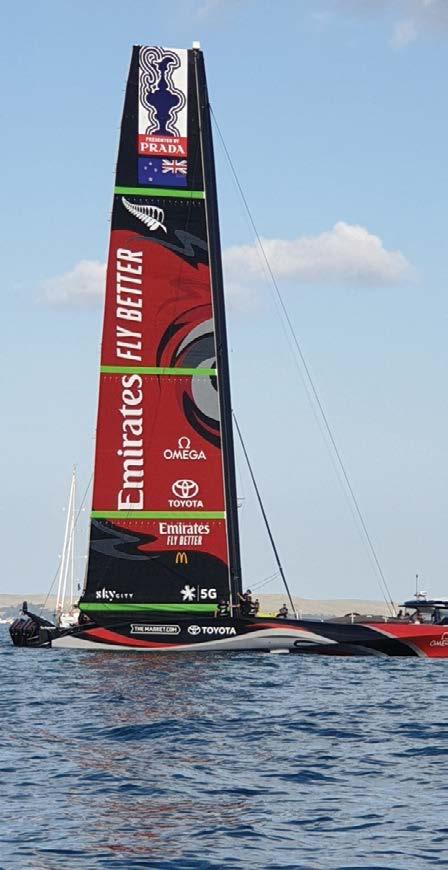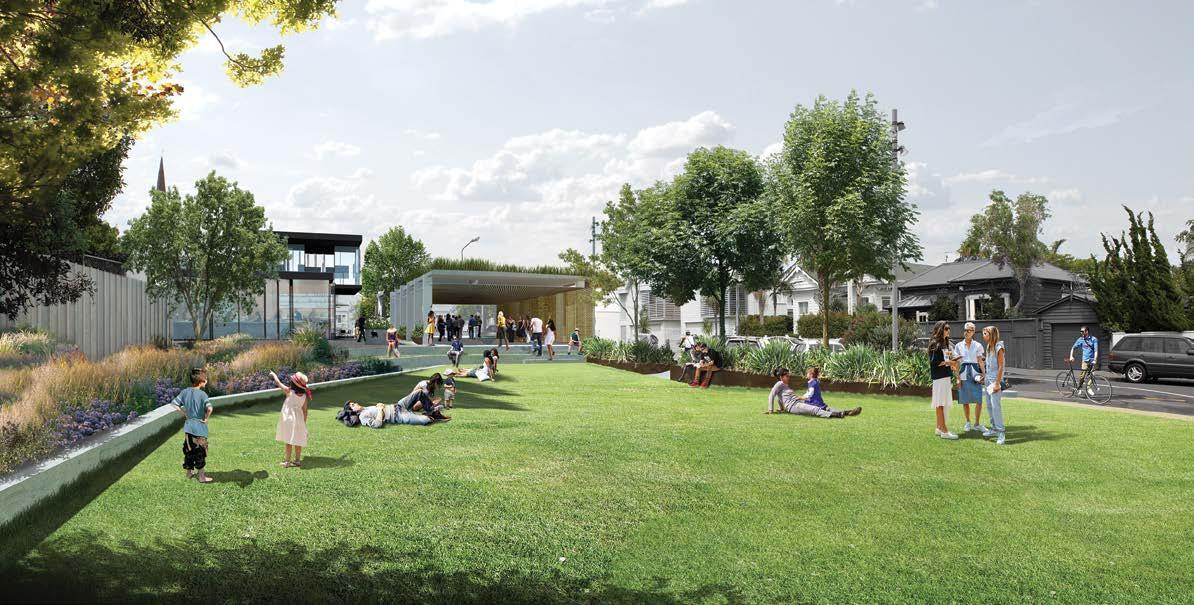
13 minute read
ACTIVE, OLDER LIFESTYLES
Members of the Royal New Zealand Yacht Squadron - Photo: Andrew Delves
STAYING YOUNGER LONGER
Many of us lament the fact that kids seem to be getting older younger, but the flip side is that adults are staying younger longer. With life expectancy in New Zealand increasing by almost 20% every two years it is little wonder that more people are continuing to enjoy a wide range of sports and activities well into their later years.
The average Kiwi is living a decade longer than they did 40 years ago and average life expectancy sitting at just over 82 years old, so the phrase “40 is the new 30” will soon be replaced by “60 is the new 40”. In fact there has possibly never been a better time for those over 65 to take up a new sport or go back to something they haven’t played since primary school. They will have literally decades to perfect their skills, develop competitive prowess and make new friends.
Locally, there are a number of excellent sports clubs and organisations that have rich histories and thriving memberships that are worth checking out. They all offer options for both beginners and those with more experience. You can learn to sail, join a competitive petanque team, or perfect your tennis serve at one of the many clubs just a stone’s throw away from Ponsonby’s main strip. We talked to members of the West End Tennis Club, the Herne Bay Petanque Club, the Royal New Zealand Yacht Squadron and the Ponsonby Cruising Club to find out what those over 65 can expect.

Herne Bay Petanque Club, measuring the distance

West End Tennis Club - David Wells + the Grumpies
David Wells - veteran member of West End Tennis Club
Playing tennis with the “Grumpy Old Men” at 8.00am weekdays is something senior business Broker for NAI Harcourts, David Wells, makes sure he fits into his busy schedule each week. “The Grumpies are an eclectic group. Intelligent, well educated, with totally different backgrounds and occupations. Tennis and gender are probably the only things we have in common,” says David. “We have some very interesting conversations between sets and after games on all sorts of topics; books, films, plays, politics, sport, restaurants, and art.”
It’s the combination of overall fitness as well as the social connection that David believes makes tennis at your local club such a great option. “I jog as well as play tennis, but I prefer tennis. Jogging on your own can be very boring, and mainly just exercises your legs but with tennis you are running, jumping and swinging your arms. It tunes up your reflexes and your hand eye coordination. There’s fresh air and sunshine; it’s just a much more complete exercise. Far better (and cheaper) than going to the gym,” he enthuses.
While David played tennis as a kid at school he believes it’s the kind of sport you can easily take up at any age. In fact many of the veteran players at West End Tennis Club only took up tennis in their more mature years. It’s a club that is really welcoming to new players and there is coaching and support for those that are completely new to the game as well as those who are wanting to brush up on their skills.
This is echoed by Paul Priddey and Malcolm Woolmore, who along with Peter Calder, form the Grumpies.
Robyn Chalmers - Herne Bay Petanque Club
Robyn Chalmers joined the Herne Bay Petanque club over a decade ago when she needed a low impact sport to satisfy her naturally competitive nature. “I’d played lots of different sports, including representative netball for Auckland minor and tennis for Australasian tournaments and I’m still sailing and various other things,” explained Robyn. “But I like competition, and with petanque you have to strategise to win.”
Petanque is a game with a long and rich history, even though it is relatively new to New Zealand. “Petanque is challenging, but it’s a good low impact sport. A lot of people started doing things like pickle ball and next minute ended up jumping round and pulling tendons,” says Robyn. “It’s a more accessible sport as it uses a smaller lighter ball and you don’t need to bend completely down to the ground like bowls to play the game effectively. Provided one can walk and has reasonable balance, petanque can be enjoyed for many years. We have a number of regular players in their 80s, and some members over 90.”
For Robyn it is not just the skill, strategy and competitive thrill of the sport that has made her such a fan, it’s also the social side of the game and how inclusive it is to all ages. “It’s a very good sport for socialising and sharing. There are a lot of people at the club; men and women and even grandchildren. My grandsons came and played during the holidays. It’s very much linked in with my grandson’s basketball skills. Once I showed him how to hold the ball he was just so natural, being able to lob it up and fade it really well.”
Robyn has played and joined games with people of all ages from all over the world as well as throughout New Zealand, joining games in France, Thailand and on the foreshore of New Caledonia. “You don’t need a language, you can just play,” she says.
Herne Bay Petanque Club encourages people to just turn up to join and learn to play. They have club days most Tuesdays and Thursdays from 9.15am - 12pm and on Fridays from 4pm till late during summer months and as Robyn points out, it’s easy to learn the basics so you can be playing and enjoying the game in no time.

President of Herne Bay Petanque Club, Robyn Chalmers
Club Day, Herne Bay Petanque Club

With a calendar of social events and opportunities to meet and play with other club members the Herne Bay Petanque Club is a great option for active locals 65+ (and younger). “I joined Petanque, along with other local organisations, with the purpose of getting to know my neighbourhood, and it has worked. I look forward to Tuesdays and Thursdays when I can play petanque with all sorts of men and women from the club and I have formed some lasting friendships.” the excitement seems like a great idea. Anecdotally we are told that marine activities across the board are enjoying a sharp increase in popularity, especially with older age groups, and these two local clubs offer those 65+ a broad range of social and sailing opportunities.
Older competitive sailors are well catered for by the RNZYS who run literally thousands of races in a year.
“There is an endless amount of sailing to get involved in for our 65+ members, and you will find they are involved in a real mix of sailing events, with many being keen sailors since they were much younger,” explains RNZYS communications manager Andrew Delves. “However, some are either newer to the sport or tired of the competitive side of sailing, and that’s when our Havana Club Rum Racing and PIC Insurance Brokers Cruising Series become popular options.”
Rum Racing is ideal for the less competitive 65+ members as it is a much more relaxed approach to racing. Held every Friday afternoon and often done with a beer or glass of wine in hand. The cruising races are incredibly popular with the over 65’s. Held on Saturdays they include a casual race to a Hauraki Gulf Island destination, followed by a get-together with a BBQ and drinks on the beach. Many then stay overnight and cruise back home on Sunday!
With a range of social activities, fun regattas and sailing events the PCC and the RNZYS are local treasures and becoming a member of either club is a fantastic way to be part of New Zealand sailing history. “It’s genuinely never too late to get involved in sailing,” says Andrew. “The options for sailing and boating in Auckland and throughout New Zealand are endless, so why wouldn’t you want to enjoy it, even if you’re starting late!”. PN
Both the Royal New Zealand Yacht Squadron (RNZYS) and the Ponsonby Cruising Club (PCC) are steeped in sailing history, with both clubs offering a range of sailing and social activities for members 65+. RNZYS is the country’s largest sailing club and official home of the America’s Cup, while the PCC is our oldest sailing club. This year the PCC will be holding the 100th Anniversary of the Lipton Cup – the oldest yachting trophy in New Zealand.
For the PCC it is about respecting tradition, maintaining a commitment to its nautical heritage, and always being the friendly home of racing, cruising and sail training. With courses for everyone from 9-90 years, this is a club keen to help locals of all ages learn or update their skills and be able to experience the joy of sailing. It’s something they believe that once you have a taste for it, it’s likely to stick. “Our members are a loyal bunch; once they join, they stay and grow old with us,” says Dorothee Lampee of the Ponsonby Cruising Club.
If ever there was a time to get into sailing, it’s now, and age is no barrier. With the Prada Cup being held in the Hauraki Gulf until February 22nd and the America’s Cup due to start on March 6th just becoming a member of one of these clubs to watch and share
Members of the Royal New Zealand Yacht Squadron - Photo: Andrew Delves

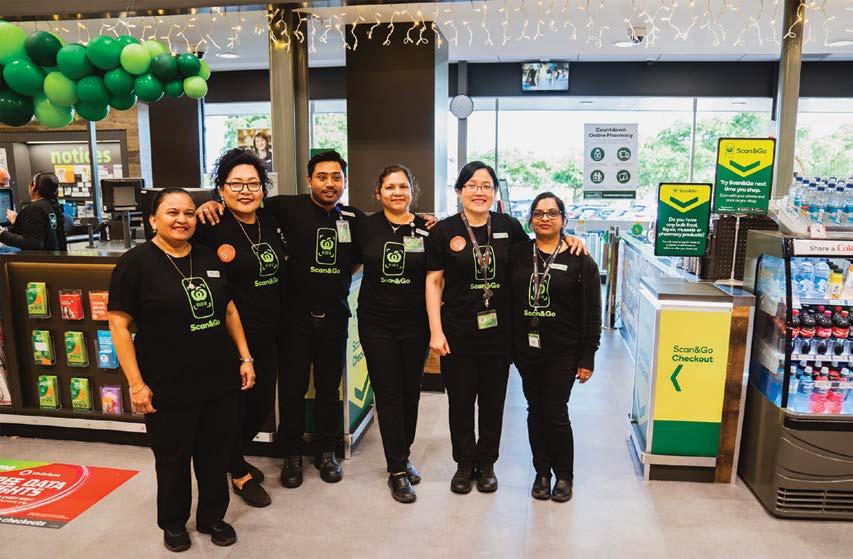
COUNTDOWN GREY LYNN RENOVATIONS
The Grey Lynn team @ Countdown on Richmond Road have recently relaunched their store following renovations.
The store has had a full refresh for the look and feel, which includes a new ‘food to go’ section and dedicated health foods aisles. The store also includes a larger pick up area and scan and go. They also told us that they have included a new pharmacy. PN

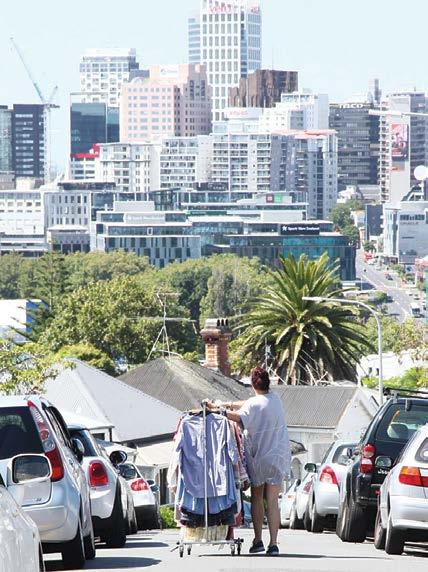
HOMESICK FOR PONSONBY?
If you, your friends or family are missing Ponsonby, why not subscribe to New Zealand’s BEST read community magazine?
An annual subscription is only $49 and can be posted anywhere in New Zealand.
Visit ponsonbynews.co.nz or email jay@ponsonbynews.co.nz for more information.
NEWS + LOCAL POLITICS + FASHION + STYLE + CELEBRITY + EAT, DRINK + BE MERRY + TRAVEL + LIVING, THINKING + BEING + PETS + FUTURE GENERATION + SPORTS + HOME + REAL ESTATE + ARTS + CULTURE
AN UPDATE FROM AT ON THE PONSONBY ROAD STREETS FOR PEOPLE PROJECT
Auckland Transport (AT) is working together with the community to test people-friendly spaces and safer ways to travel on Ponsonby Road.
These will be temporary changes that can be tested and adjusted once in place. Similar projects in Auckland can be seen on Sale Street and High Street in the city.
The response so far has been great. Between 16 November and 10 December 2020, we received over 1500 pieces of feedback from the community with some fantastic ideas put forward. A community design group of locals was then formed to build on these ideas. This group features members of the business community, Waitemata Local Board, residents’ associations, Bike Auckland, and other members of the community. The project is in good hands with this highly engaged and knowledgeable community group.
The first community design workshop was held on 13 December 2020. The group analysed feedback from the public to understand the different issues, needs, and opportunities for Ponsonby Road. After the summer break the group re-convened on 17 January 2021 to identify specific locations where changes could be put in place. A third workshop will be held in February when the group will get down to the finer details and develop specific concepts and design options to be shared with the community. PN
Find out more at www.at.govt.nz/ponsonbyroad
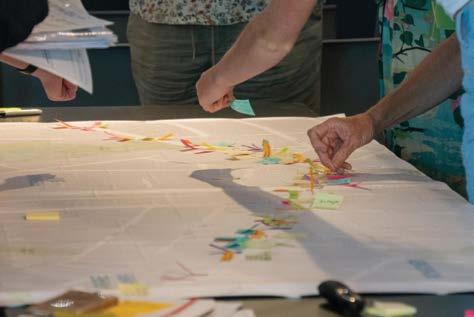
JOHN APPLETON: CARPAL TUNNEL?
PRP could be an option for treatment.
Carpal tunnel syndrome (CTS) is a common condition which develops when a large nerve (median nerve) becomes compressed as it passes through a channel in the wrist known as the carpal tunnel. The carpal tunnel is formed by 8 small bones of the hand known as carpals (carpus from Greek meaning wrist) and a strong ligament called the transverse carpal ligament. The carpals form three of the walls of the carpal tunnel and the carpal ligament forms the other wall.
There isn’t a lot of space for the median nerve to pass freely through the carpal tunnel and any swelling around the joints or tendons can reduce the available space thus compressing and irritating the nerve. The median nerve is important as it’s responsible for sensation in the hand and the power we need for grip etc.
CTS is the most common nerve entrapment neuropathy and it’s interesting to note that that it affects women significantly more than men. As to why anyone might develop CTS, there is no definitive research, but age is a factor and being overweight, having hypothyroidism, diabetes or having a family member who had CTS are potential reasons. An injury to the wrist such as a fracture could result in the onset of CTS as could activities which involve a lot of wrist movement and particularly frequent use of computer keyboards.
The first symptoms of CTS can often be experienced at night with tingling or numbness in the hands. This can lead to pain in the fingers and thumbs (not the little finger) which can travel up the wrist into the forearm, the upper arm and sometimes as far as the shoulders. A common symptom is loss of grip which is noticed when trying to remove lids from jars or bottles.
Treatments can include, analgesic painkillers, wearing wrist splints particularly at night, steroid injections and even a surgical release. CTS can be a very debilitating condition which can significantly impact on quality of life and thus many who suffer with CTS would surely be interested in a simple treatment option that may not only relieve symptoms but repair damage to tissue in the carpal tunnel.
In a previous article I have written about the use of platelet rich plasma (PRP) for arthritis in joints. PRP is a simple very innovative treatment that enlists the body’s own resources to effect repairs. PRP therapy involves taking blood from a patient’s arm and spinning it in a centrifuge. This separates the red blood cells from the plasma which is the liquid part of whole blood. The plasma contains platelets which are special blood cells that have key roles in clotting the blood at the site of an injury and releasing growth factors that harness the body’s ability to heal. PRP is becoming widely accepted as a form of regenerative medicine that can be used for an ever-increasing number of medical conditions.
Recently I read a study that assessed the effectiveness of using PRP to treat carpal tunnel syndrome. 60 patients with single side mild to moderate CTS were randomised into two groups of 30 (PRP and control groups). The PRP group were injected with one dose of PRP and the control group wore a night splint during the study period. Results showed that the PRP group exhibited a significant reduction in pain scores and improved function when compared to the control group.
Another study conducted in Egypt compared PRP treatment with steroid injections. The PRP group in the study reported significantly better outcomes than the group that were given a steroid injection. The researchers concluded that in CTS, PRP was a better treatment alternative with respect to pain and functional outcome. In addition, it was associated well with improved neurophysiological values than those observed after corticosteroid injection.
Surely any treatment that is safe and uses the body’s own repair mechanisms is worth a try. (JOHN APPPLETON) PN E: john@johnappleton.co.nz www.johnappleton.co.nz







